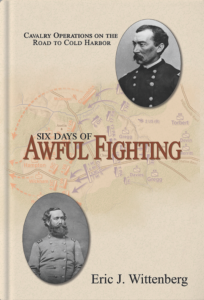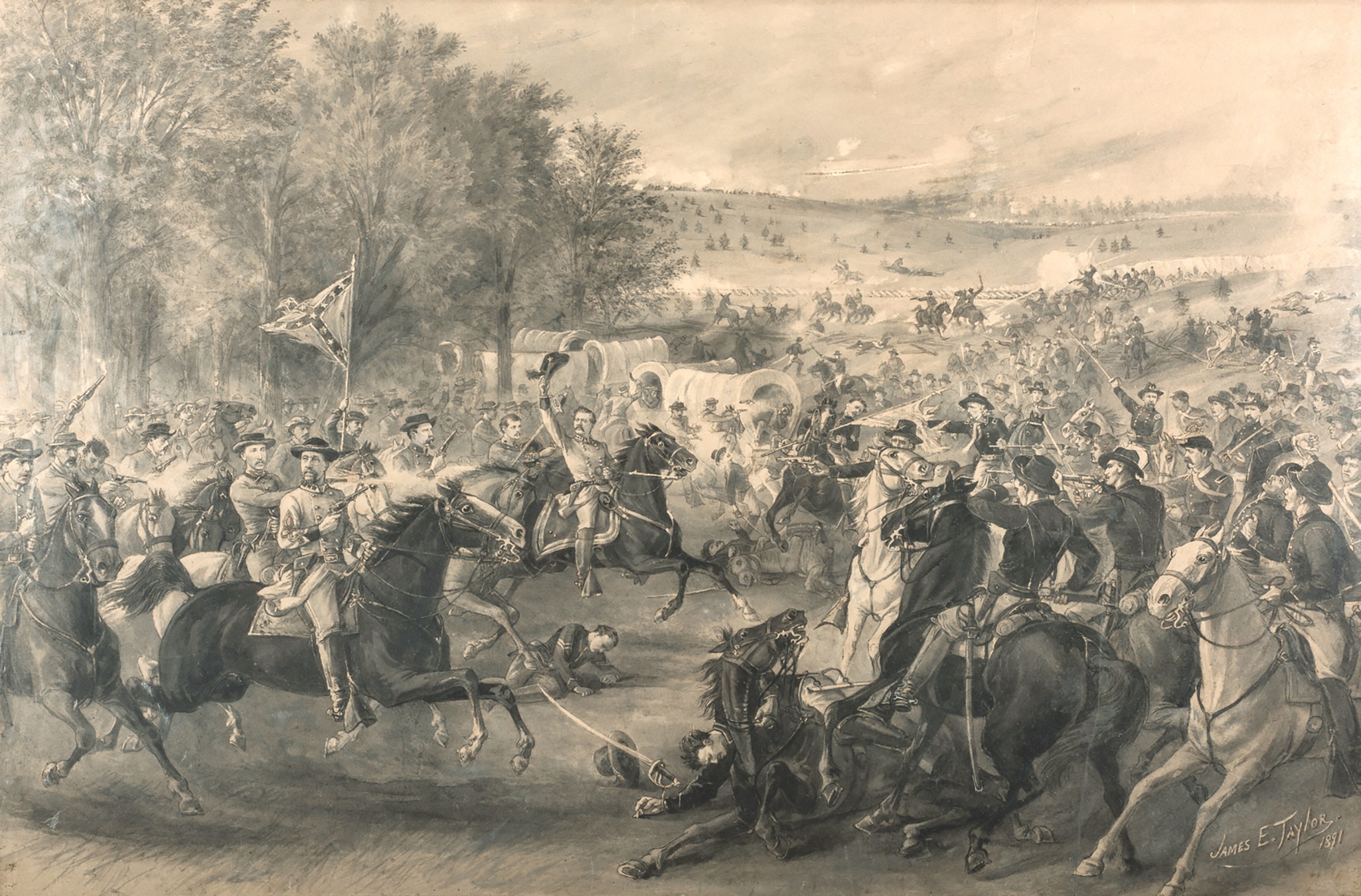Due largely to the titanic conflict that raged almost continuously between Union forces commanded by Lt. Gen. U.S. Grant and Confederate General Robert E. Lee’s Army of Northern Virginia during the Overland Campaign, little has been written about the cavalry operations between the Battle of Yellow Tavern on May 11, where Confederate Maj. Gen. J.E.B. Stuart was mortally wounded, and the Battle of Trevilian Station a month later. This is especially true, according to author Eric Wittenberg, for the six days leading up to the slaughter at Cold Harbor on June 1. During those six days the opposing cavalry corps slugged it out at places like Hanovertown, Matadequin Creek, Hanover Court House, and the first encounters at Cold Harbor. The largest encounter, the Battle of Haw’s Shop, which occurred on May 28, receives the most coverage in Wittenberg’s book—62 pages—for good reason.

By Eric J. Wittenberg
Fox Run Publishing, 2021, $19.95
The author set out to put those “largely overlooked cavalry battles” in the context of the coming battle at Cold Harbor, which he argues cannot be understood “unless one also understands how the armies got there.” A theme effectively woven throughout this book is how the nature of cavalry fighting changed during the six days referred to in the title. The arrival of Maj. Gen. Phil Sheridan and Brig. Gen. Alfred T.A. Torbert, among other former infantry officers, meant the Union cavalry’s metamorphosis had already begun before the Overland Campaign started. Stuart’s death and the ascendance of Wade Hampton to command of the Army of Northern Virginia’s Cavalry Corps meant it would follow suit, out of necessity. Much of the fighting that took place between May 27 and June 1 saw both sides using their cavalry more as infantry.
Wittenberg effectively demonstrates Sheridan’s “troopers performed admirably, fighting and marching constantly and getting the better of their foes in all of the engagements discussed in this book” in part because he and some of his officers “thought more like foot soldiers than they did cavalrymen.” However, “his tactics were unimaginative and relied heavily on the combination of an advantage in manpower and the superior technology of the Spencer carbines.”
As the narrative unfolds, these limitations resulted in Sheridan failing at his primary mission “to find the main body of the Army of Northern Virginia”—in no small part because Confederate cavalry under Hampton “became extremely effective at fighting dismounted. While Sheridan’s cavalry had gained the upper hand on the Rebel troopers in general, Hampton’s men remained a dangerous force, quite capable of defeating their foe, as became clear later at Trevilian Station.
Two technical observations worth mentioning: First, Wittenberg makes maximum use of footnotes over endnotes by including roughly two dozen biographies of varying length of lesser- known participants in the events of those six days. Doing so supplements rather than detracts from the narrative, as endnotes would have done. Second, there are 25 detailed maps that are, with one minor exception, very helpful for tracking unit movement. The absence of any compass on the maps, however, does make it unnecessarily challenging to match the author’s east-west, north-south descriptions on the maps.
Six Days of Awful Fighting delivers the expected from Eric Wittenberg; admirably researched first-person accounts used effectively to show the chaos and violence of cavalry warfare and its impact on the movements of both armies leading to the bloodbath at Cold Harbor.
[hr]
Thank you for visiting historynet.com. If you buy something through our site, we might earn a commission.





